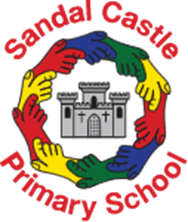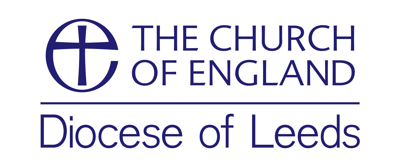Phonics and Early Reading
Welcome to our English Page
Here you will find information and resources to support your children with their English work.
Learning to read so we can read to learn and gain pleasure is at the heart of all areas of the curriculum. Early reading is therefore our first, foremost and central priority in school so all children are readers. Books are enjoyed and used across all curriculum areas as highly valued hooks, tools and a way of escaping in to other worlds, times, places and situations.
We are determined that all children will learn to read, regardless of any barriers to and levels of learning. We place a strong focus on reading and believe that all children need to learn how to read by the end of KS1- marrying both strong phonic knowledge and fluency for comprehension. Our teaching of phonics across school is fundamental to the progress of all children, regardless of their starting points. We believe that it is important that all children become fluent readers and as a result, reading is always our first, foremost and central ongoing priority. Because of this, children will have the skills and knowledge to access the wider curriculum. A crucial part of this is to inspire a love of reading. A range of texts and genres are shared and used daily as part of functional reading lessons but also as part of timetabled ‘story time’ across school- this is integral to our approach to whole school reading. We foster a love of reading across the curriculum as it is our upmost priority. Our teachers read to children every day, sometimes to challenge and often purely for pleasure. Reading aloud and storytelling are skills we develop and value highly amongst our body of staff.
Overview
In English, we teach our children to speak, read and write confidently in order to communicate effectively and with purpose. Through rich reading, speaking and writing opportunities, we develop confident, broad-minded children who can discuss and write about issues affecting the world around them, interpreting language and manipulating it powerfully for effect. Our curriculum provides children with a wide range of texts to inspire imagination and creativity, encouraging a love and pleasure of reading across a range of genres. We study author’s craft so that our children can develop their own writing styles after studying the patterns and rules of language- spelling, grammar and punctuation. We create opportunities for our children to study texts critically and analytically through in depth book talk where children debate, discuss and explore texts enthusiastically in order to develop their own voice and opinions about key issues affecting the human and natural world. We encourage our children to view reading, writing and speaking as powerful tools for change and use Bloom’s Taxonomy to enable our children to deepen and broaden their understanding and skills across the English curriculum.
The aims of our English Curriculum are:
- To ensure that the content of our phonics programme is appropriately structured and sequenced to support pupils’ progress with reading.
- To ensure that our phonics programme matches or exceeds the expectations of the Curriculum.
- To ensure that we have clear expectations of our children’s phonics progress from EYFS to Year 2.
- To ensure ambitious and clear expectations when teaching phonics.
- To develop a body of staff who are early reading experts.
- To develop and foster a love of reading through clearly timetabled story time.
- To create well organised and purposefully accessed reading areas around school.
- To model positive attitudes to reading by talking knowledgeably about books.
- To read aloud to children, confidently using a success criteria to inspire enjoyment and pleasure.
- To demonstrate to our parents how important reading aloud to their children at home is.
- To develop a culture of reading in school where children can access a range of books to share and read at home and school, where they can discuss books with enjoyment and comprehension.
- To ensure that our home school reading system celebrates what children can do by making sure that the sequence of reading books show progression in phonics knowledge that is matched closely to our phonics programme. This enables children to read at home with accuracy because it makes sure that children have learned the relevant phonic skills and exception words in a book before giving it to them to read.
- To develop confident speakers who can articulate their feelings, thoughts and opinions confidently, clearly and with a range of language structures for effect, adapting it for purpose, circumstance and formality.
- To develop good listeners- children who value what others have to say and listen with respect, learning from each other and developing the thoughts of one another to create greater depth.
- To use the range of Bloom‘s Taxonomy thinking skills to broaden understanding of key concepts so that children can evaluate, analyse and respond to language in its various forms critically.
- To develop readers and writers who are secure in their phonic/spelling knowledge and can use and apply it to read and write widely.
- To develop confident, independent readers who love to read across a range of genres and for a range of purposes through a comprehensive approach to teaching the mechanics and comprehension of language, sentence/word knowledge and vocabulary.
- To enable children to write accurately with a secure understanding of spelling, grammar and punctuation rules and patterns.
- To encourage children to read with awareness, using reading as a tool to reflect on their own character and choices but also as a tool to inform them and raise awareness amongst our readers by ensuring our children access challenging and pertinent texts.
- To use reading and writing as vehicles for change in our school, local and wider community by ensuring that children have a voice through a high expectation of the use of the written word so that children recognise the value and purpose of reading and writing.
- To enable children to manipulate language independently and deliberately with meaning and in order to have a greater impact on their reader, creating opportunities to learn from a range of high quality authors and model texts across the curriculum.
- To create opportunities for children to plan, draft and then edit and improve their own work.
- To provide opportunities for children to develop key reading comprehension skills such as inferring meaning in a range of situations, summarising and developing in depth understanding of vocabulary in its various forms and nuances.

